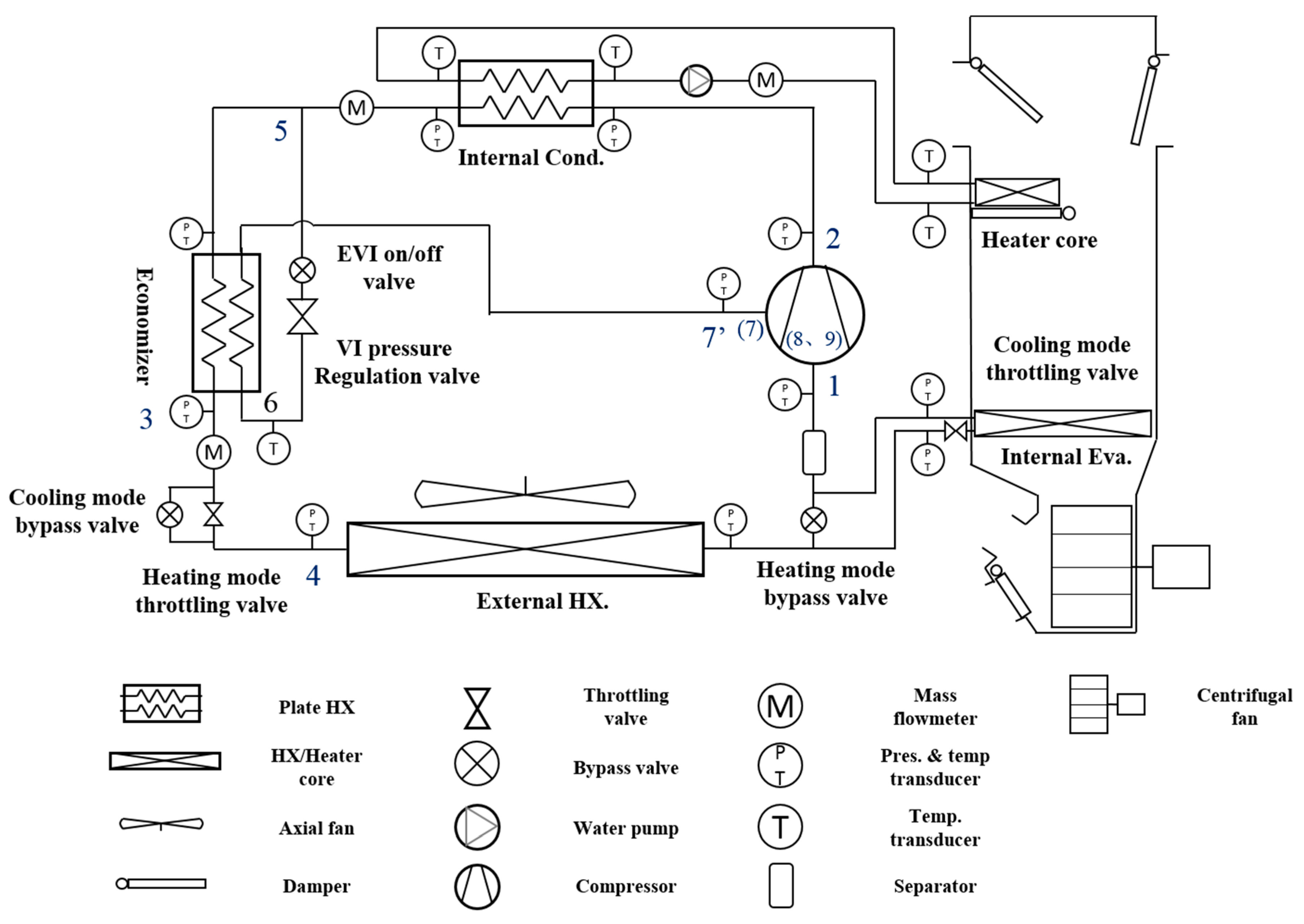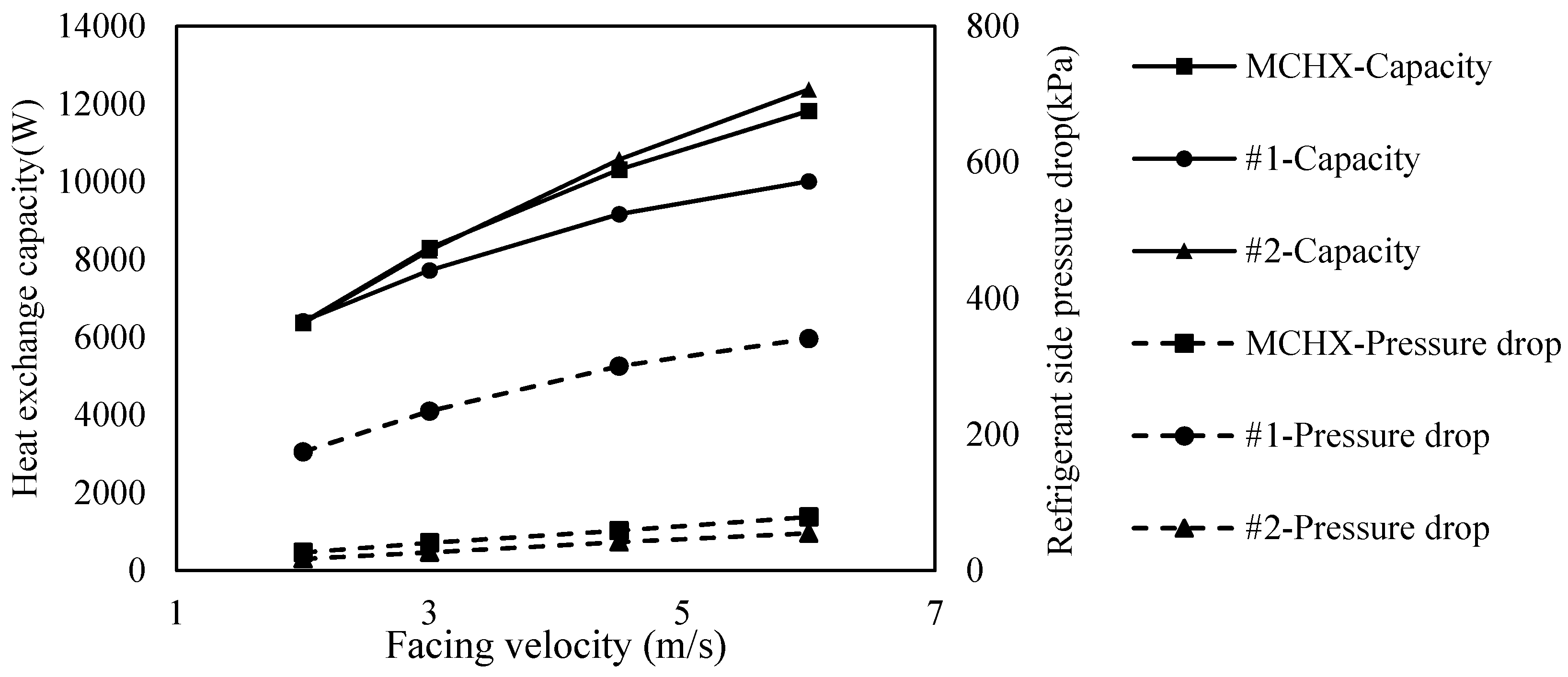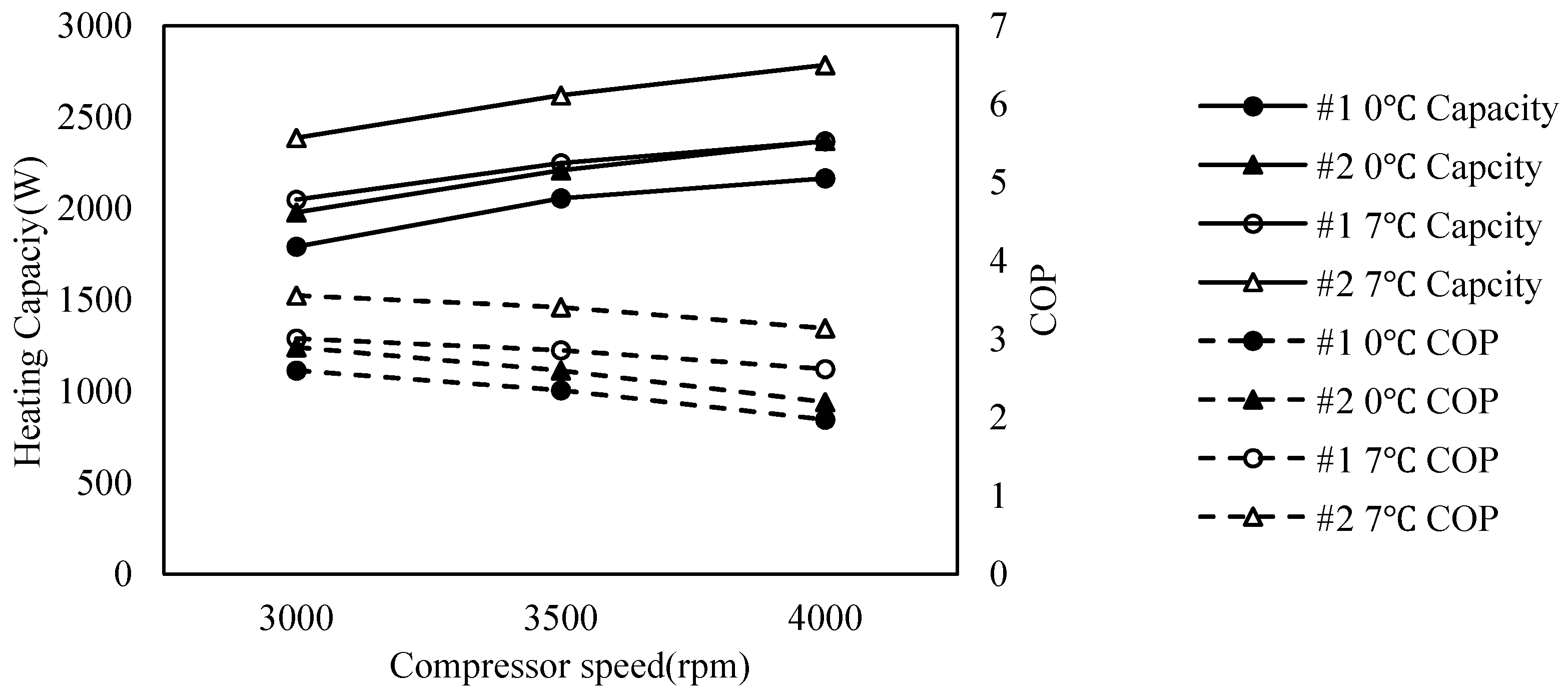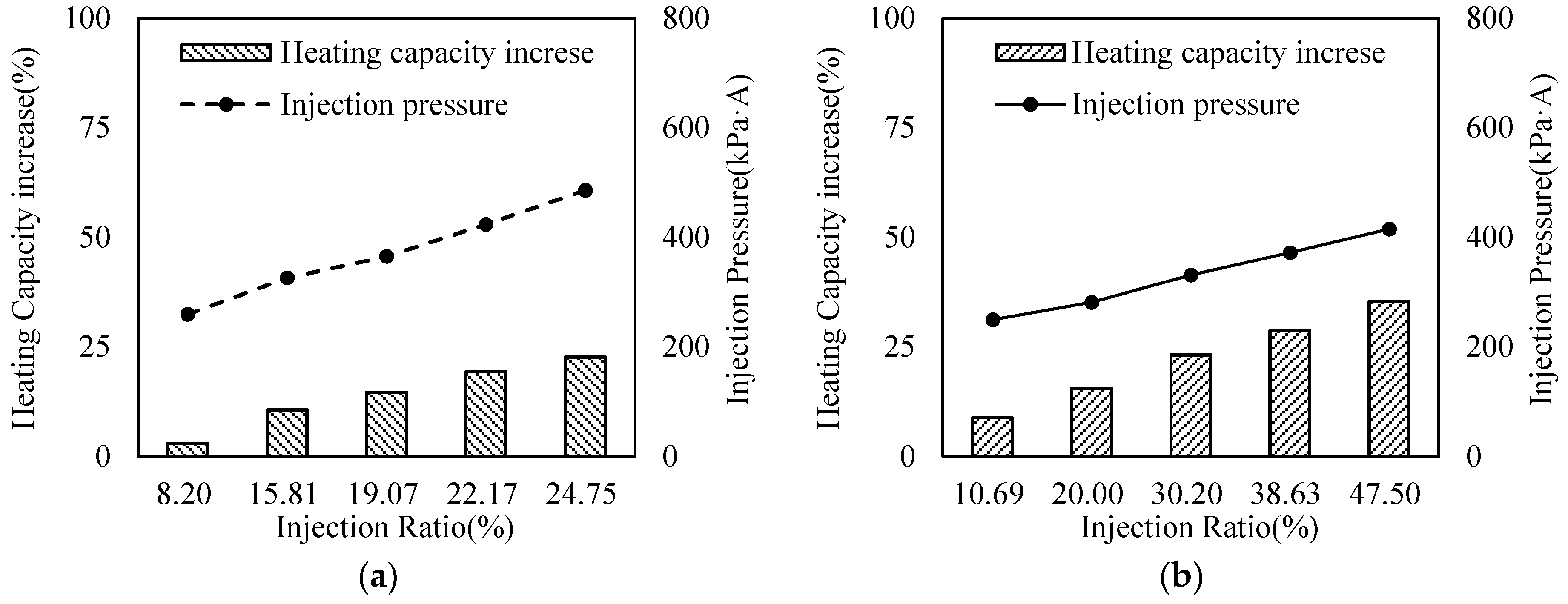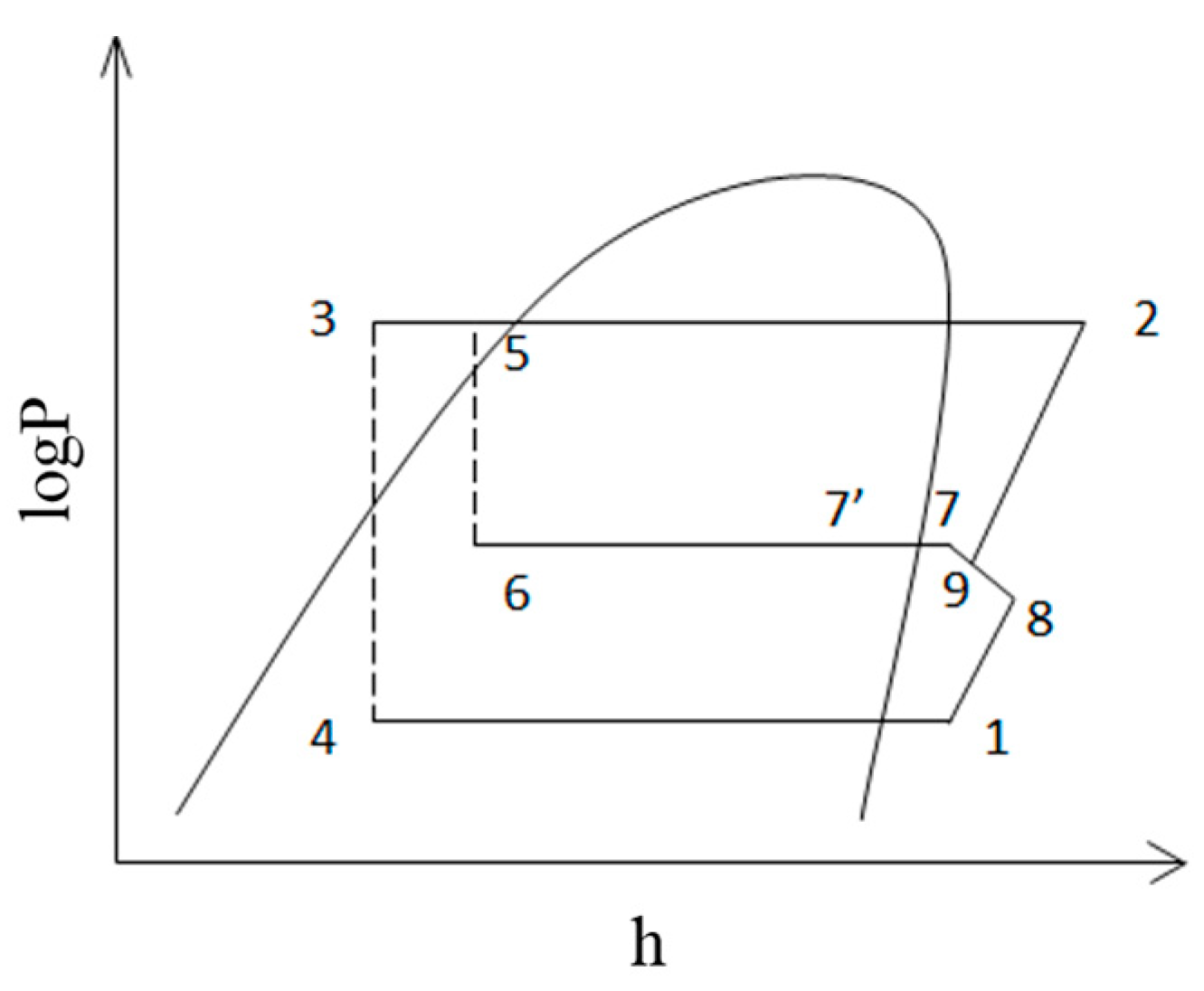1. Introduction
With the rising concerns for environmental protection and energy economy, electric vehicles (EVs) seem to be a wise choice to meet both environmental demands and user needs, which has contributed to their increased worldwide use recently [
1].
Unlike fuel vehicles, EVs do not have enough engine waste heat to meet heating demands in winter. A typical solution is to use a positive temperature coefficient (PTC) heater, but doing so causes a significant decrease in range due to low efficiency. According to [
2], a 60% decrease in Urban Dynamometer Driving Schedule (UDDS) range may occur due to heating loads in winter.
The vehicle heat pump system is becoming a popular point of consideration due to a relatively high efficiency in meeting the heating requirements. Some studies have already been done in this area [
3,
4,
5,
6]. However, there are still some remaining problems to be solved.
One of them is the frosting of the external heat exchanger [
7,
8]. When the system is operated in heat pump mode, the external heat exchanger functions as an evaporator. Due to low ambient temperature and high relative humidity, the surface of the heat exchanger will frost. This may not be a problem in residential and commercial heat pump systems, as tube and fin heat exchangers (TFHXs) are used as the external heat exchangers. The water generated during defrosting can be easily drained. However, in current vehicle air conditioning systems, microchannel heat exchangers (MCHXs) with louvered fins are used as the external heat exchangers. The water generated from the defrosting process mostly accumulates between the fins, which is difficult to remove [
9]. When the external heat exchanger frosts again, the remaining water will freeze and cause a dramatic performance decrease. Though lots of efforts have been made to optimize the drainage performance of MCHX [
10], it is still a major barrier in vehicle heat pump systems [
11]. One way to solve the drainage problem is to use TFHX as an external heat exchanger. Compared to MCHX, the TFHX has a relatively low heat exchange efficiency [
12], and its performance needs to be optimized to meet the system requirements.
The second one is the significant decrease in heating performance of a heat pump system when operated in extremely cold regions. The low evaporating temperature leads to a low density of compressor suction, while the high pressure ratio of compression leads to a lower volume efficiency. The mass flow rate of the system becomes much lower and the discharge temperature becomes much higher than the normal condition.
Vapor injection (VI) makes it possible for heat pumps to operate in extremely cold conditions. Typically, there are two kinds of VI system structures [
13]: the economizer vapor injection (EVI) system and the flash tank vapor injection system (FTVI). In an EVI system, the refrigerant in the injection bench is first throttled and then becomes superheated in the economizer. The cooling capacity generated in the throttling process is absorbed by the main bench and further cools the refrigerant that enters the main throttling valve. In the FTVI system, however, the refrigerant that exits the condenser is throttled first. The two-phase refrigerant enters a flash tank, where the liquid and gas are separated. Then, the saturated gas is injected into the compressor, while the liquid phase enters the main throttling device and then the evaporator. There are studies that show that the flash tank system may have better performance than the economized system [
14], but this conclusion is not widely proven. Wang [
15] and Ma and Zhao [
16] concluded that the heating capacity and coefficient of performance (COP) of the flash tank cycle were higher than those of the economizer cycle, while Nguyen [
17] concluded that the performance of the economizer cycle is better than that of the flash tank cycle by a wide margin. Due to control complexity and system stability, the EVI system is more widely used, especially in small capacity heat pumps.
In residential and commercial heat pumps, the EVI system has been studied and tested by lots of studies [
13], and good system performance and reliability levels have been achieved. However, when it comes to vehicle heat pump systems, little existing literature can be found.
In this article, an R134a EVI heat pump system was built and tested. The external heat exchanger was an optimized TFHX, which can meet both drainage and heat exchange needs. The effects of injection pressure and economizer capacity are also discussed in this article.
